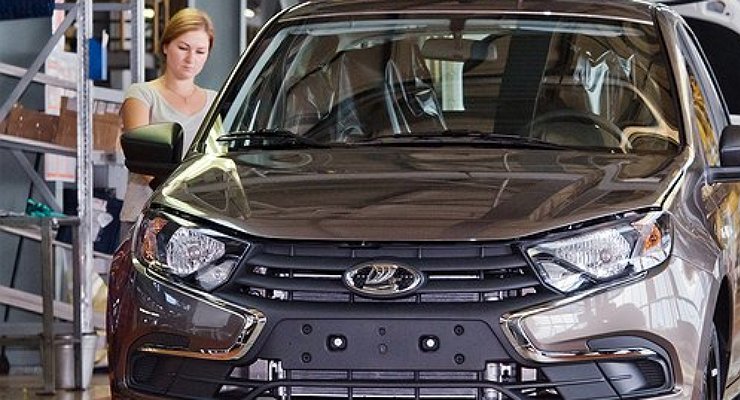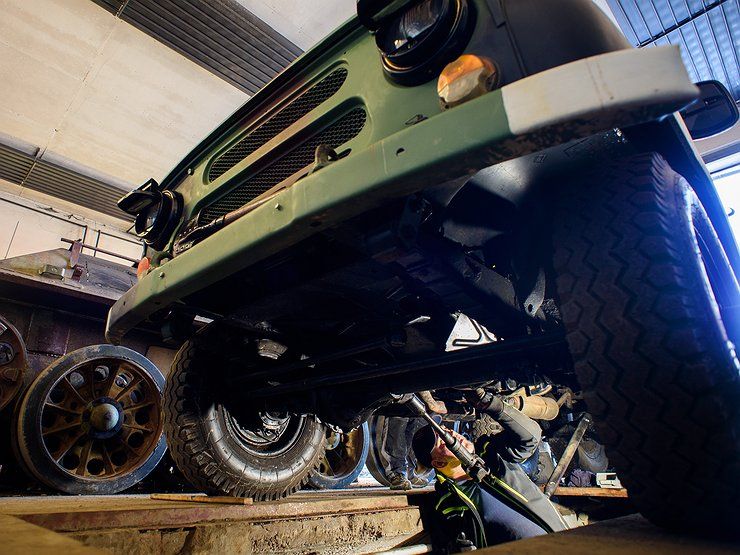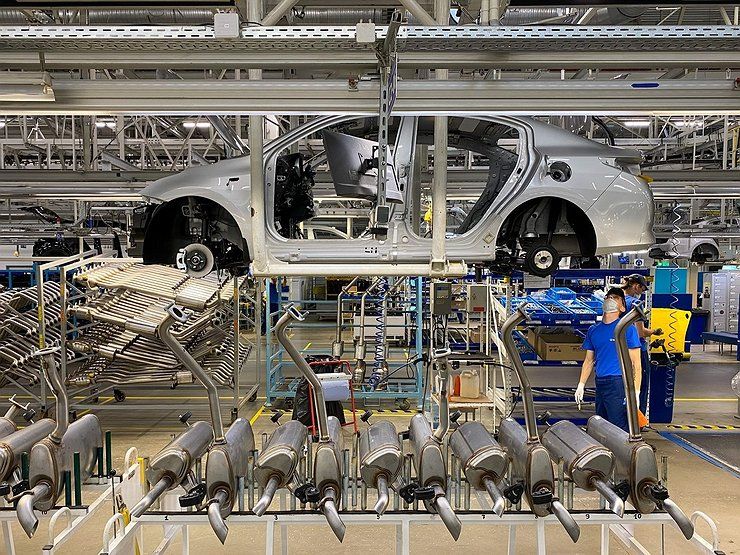Why the Russian car industry will completely collapse in the near future?
- September 16, 2022
- 0
Anyone who does not want to at least learn from his own mistakes will inevitably end up in an extremely unpleasant situation. Once upon a time, the auto
Anyone who does not want to at least learn from his own mistakes will inevitably end up in an extremely unpleasant situation. Once upon a time, the auto

The first import substitution campaign started in 2005 with the introduction of the industrial assembly regime in the Russian Federation. The results were revealed with full clarity in 2022, when foreign companies actually froze supplies of cars, components and assemblies to Russia. They stopped all assembly plants in our country, with the exception of the Chinese company Haval, which settled in Tula. And then it turned out that our production localization performance is, if not zero, then very close to that. Even purely Russian factories, off the assembly line from which cars under the LADA and UAZ brands left, could not ensure uninterrupted operation without foreign parts.
Thus, AVTOVAZ heroically planned to restore almost its entire model range since July, and as a result, it was able to resume production only of the primitive Granta and Niva, and in simplified trim levels. As strange as the Latin alphabet looks in the name of household products, cars without basic security systems like ABS or airbags look just as ridiculous in the 21st century. As for UAZ, it can’t quite restore the assembly of Loafs and Patriots, which are as simple as a kitchen stool – after nearly 20 years of localization struggles, it was “suddenly” that they also had an exorbitant level of imported components.
But if before it was possible to rub glasses in the state and slowly withdraw money from them in the form of compensation for the recycling fee, now it has become impossible to deceive – the flow of foreign parts is very thoroughly blocked and apparently for a long time. So, since February 2022, the issue of import substitution has become very acute in various sectors of the economy, including the automotive industry, and throughout the production chain – from the development of software for electronic systems to the final assembly.
It seems that the state has decided to withdraw from solving this issue – all of a sudden it will somehow solve itself. Allowing parallel imports is of course an important step, but absolutely insufficient. This gives car manufacturers and dealers the opportunity to go on the road themselves. The rescue of the drowning is the work of the drowning itself. They are trying to save themselves as best they can – they are urgently trying to switch imports from western components to eastern components. With all due respect to China, Turkey, Iran and other states friendly to varying degrees, there is a strong sense that all this is nothing more than an attempt to impose a yoke on another rather than a yoke.
It is quite clear where such an ostrich policy will lead. The rest of the world’s frantic search for replacements for Western technology, undertaken piecemeal by individual manufacturers, is not going to end well. Household equipment, made in such a primitive way, will be unequivocally uncompetitive, it will very soon be replaced by Asian suppliers. Our products are finally deteriorating both technically and technologically. And apparently this is the future destined for our auto industry, if the approach to the problem doesn’t change radically.
There is a need for a strong centralized state program for import substitution and attracting investment in industry, for the creation of new enterprises and institutions. It must be backed by genuine, non-stingy funding, with strict control over the spending of the funds and the implementation of each phase.
There will be more than enough people who want to be covered by such a program. Therefore, it should be developed by professionals, not officials. Otherwise, there is a great temptation to allocate budget resources to, for example, the proponents of electric transport, who seriously believe that we must beat all foreign competitors in this area.
But the development of this direction will require huge investments, which will not yield returns for the foreseeable future. And at the current stage, when the external pressures on the Russian economy are so strong, it is better to postpone experiments with the “transport of the future” until better times. In the meantime, to develop our own modern combustion engine, microchips, ABS and ESP electronic control units, airbags – everything we have not learned how to do.
The only unfortunate thing is that this optimistic scenario is unlikely to materialize.


The first import substitution campaign started in 2005 with the introduction of the industrial assembly regime in the Russian Federation. The results were revealed with full clarity in 2022, when foreign companies actually froze supplies of cars, components and assemblies to Russia. They stopped all assembly plants in our country, with the exception of the Chinese company Haval, which settled in Tula. And then it turned out that our production localization performance is, if not zero, then very close to that. Even purely Russian factories, off the assembly line from which cars under the LADA and UAZ brands left, could not ensure uninterrupted operation without foreign parts.
Thus, AVTOVAZ heroically planned to restore almost its entire model range since July, and as a result, it was able to resume production only of the primitive Granta and Niva, and in simplified trim levels. As strange as the Latin alphabet looks in the name of household products, cars without basic security systems like ABS or airbags look just as ridiculous in the 21st century. As for UAZ, it can’t quite restore the assembly of Loafs and Patriots, which are as simple as a kitchen stool – after nearly 20 years of localization struggles, it was “suddenly” that they also had an exorbitant level of imported components.
But if before it was possible to rub glasses in the state and slowly withdraw money from them in the form of compensation for the recycling fee, now it has become impossible to deceive – the flow of foreign parts is very thoroughly blocked and apparently for a long time. So, since February 2022, the issue of import substitution has become very acute in various sectors of the economy, including the automotive industry, and throughout the production chain – from the development of software for electronic systems to the final assembly.
It seems that the state has decided to withdraw from solving this issue – all of a sudden it will somehow solve itself. Allowing parallel imports is of course an important step, but absolutely insufficient. This gives car manufacturers and dealers the opportunity to go on the road themselves. The rescue of the drowning is the work of the drowning itself. They are trying to save themselves as best they can – they are urgently trying to switch imports from western components to eastern components. With all due respect to China, Turkey, Iran and other states friendly to varying degrees, there is a strong sense that all this is nothing more than an attempt to impose a yoke on another rather than a yoke.
It is quite clear where such an ostrich policy will lead. The rest of the world’s frantic search for replacements for Western technology, undertaken piecemeal by individual manufacturers, is not going to end well. Household equipment, made in such a primitive way, will be unequivocally uncompetitive, it will very soon be replaced by Asian suppliers. Our products are finally deteriorating both technically and technologically. And apparently this is the future destined for our auto industry, if the approach to the problem doesn’t change radically.
There is a need for a strong centralized state program for import substitution and attracting investment in industry, for the creation of new enterprises and institutions. It must be backed by genuine, non-stingy funding, with strict control over the spending of the funds and the execution of each phase.
There will be more than enough people who want to be covered by such a program. Therefore, it should be developed by professionals, not officials. Otherwise, there is a great temptation to allocate budget resources to, for example, the proponents of electric transport, who seriously believe that we must beat all foreign competitors in this area.
But the development of this direction will require huge investments, which will not yield returns for the foreseeable future. And at the current stage, when the external pressures on the Russian economy are so strong, it is better to postpone experiments with the “transport of the future” until better times. In the meantime, to develop our own modern combustion engine, microchips, ABS and ESP electronic control units, airbags – everything we have not learned how to do.
The only unfortunate thing is that this optimistic scenario is unlikely to materialize.
Source: Avto Vzglyad
I’m Sandra Torres, a passionate journalist and content creator. My specialty lies in covering the latest gadgets, trends and tech news for Div Bracket. With over 5 years of experience as a professional writer, I have built up an impressive portfolio of published works that showcase my expertise in this field.